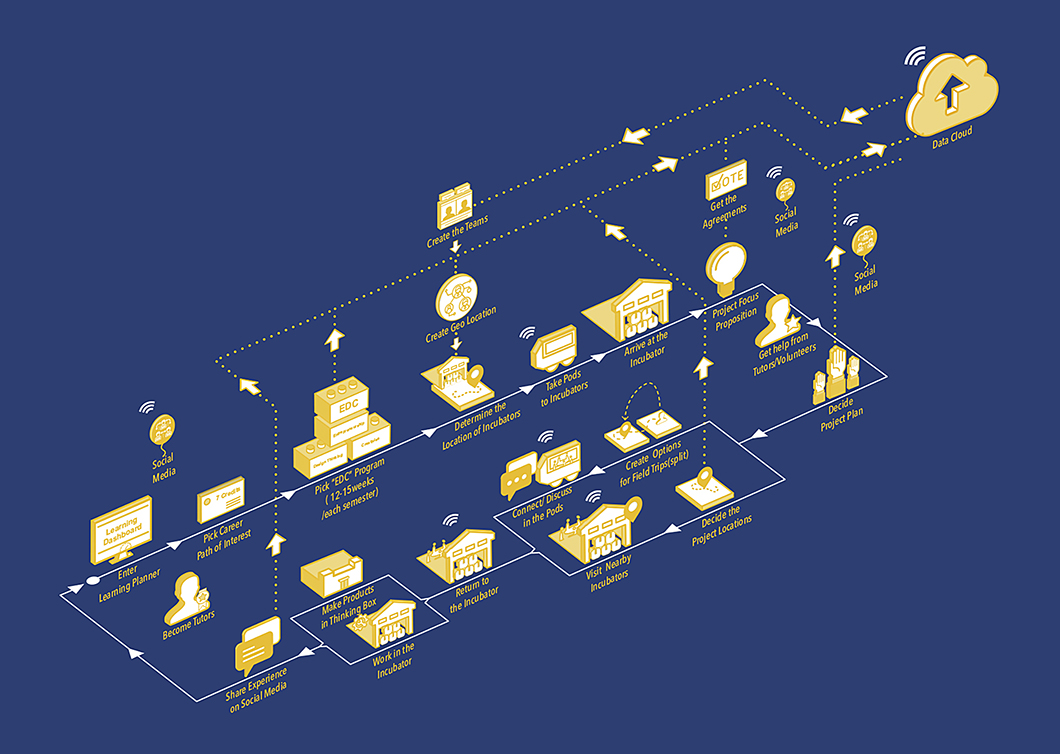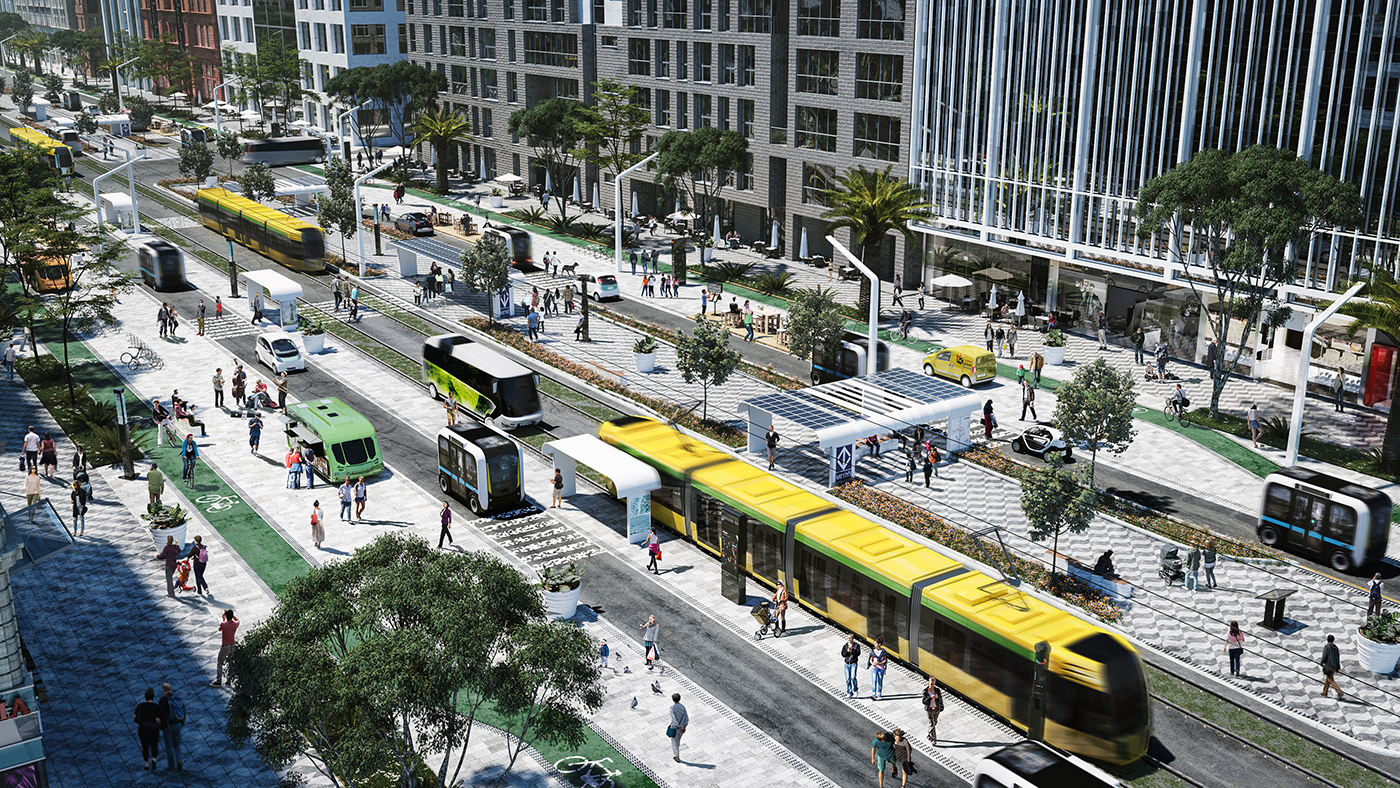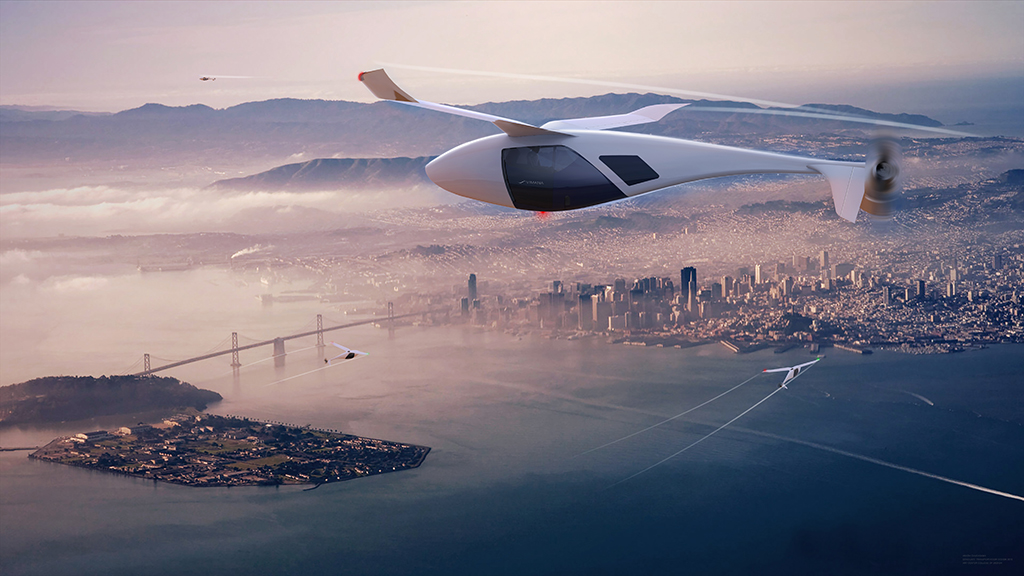Cooper Hewitt engaged leading figures in design, transportation, and technology for perspectives on the future of mobility.
In Detroit the lack of mobility options results in fewer opportunities for activities, employment, and access to services. As a mobility neophyte, when engaging in future mobility scenarios, I prefer to think of possible futures, that which might happen, as opposed to probable futures, that which is most likely to happen. The community, and how mobility ultimately can enable all citizens’ participation in society, is for me the central focus.
—MARIA LUISA ROSSI, Professor of MFA Integrated Design at the College for Creative Studies

Detail, Equitable Mobility, Detroit 2030, 2017–18; College for Creative Studies (Detroit, Michigan, USA); Maria Luisa Rossi with Integrated and Transportation Design students; Courtesy Kailin Wang, MFA Integrated Design students at College for Creative Studies
Cities have always embodied complex and interconnected mobility ecosystems. Today, these systems include a digital infrastructure as well—adding benefits and complexity in equal measure. Minimizing this complexity (and maximizing benefits) will require designers to think in a holistic, systems-first way. By reimagining the city as a mobility platform and taking a holistic approach to designing user experiences at scale, we will discover new ways to address today’s urban mobility challenges and make our cities more livable tomorrow.
—MIKE MILLEY, Director of Creative Consulting, LA Studio Designworks, A BMW Group Company
With emerging revolutions in people-focused street design and autonomous mobility, we have a once-in-a-lifetime chance to make new transportation technologies work for our cities instead of adapting our cities to new technology. We need to update the software of the street, using integrated data streams and new mobility apps to make it easier for people to get around by foot, bike, or bus, thus reducing the need for cars and their footprint on streets. We also need to update the hardware on streets by radically redesigning them so people can get around without needing a car in the first place.
—JANETTE SADIK-KHAN, Principal, Bloomberg Associates; former commissioner, NYC Department of Transportation

Photorealistic rendering based off of concepts in the NACTO Blueprint for Autonomous Urbanism. Reproduced with permission by Bloomberg
Philanthropies and the National Association of City Transportation Officials.
Creating future mobility systems is complex, requiring multiple disciplines working together. A new genre of mobility designer will be charged with providing thought leadership, facilitation, and translation between the many engineers, planners, elected officials, developers, legislators, and government agencies who have conflicting agendas, speak different “languages,” and rarely consider the needs and aspirations of end-users. So, these multifaceted designers must also vigorously research, develop, and champion complete user experiences if solutions are to succeed.
—GEOFF WARDLE, Executive Director, Graduate Transportation Systems and Design

Vimana, a thesis project by Akash Chudasama, graduate of Graduate Transportation Systems and Design program at ArtCenter College of Design, explored the future of the light aircraft industry to include pilotless, on-demand, electric, intercity, shared mobility services to compete favorably with commercial airline and high-speed rail alternatives. Courtesy of Akash Chudasama, graduate of Graduate Transportation Systems and Design program, ArtCenter College of Design.
Mobility is designed to bring people access to their communities. The design is inclusive of people of all ages and abilities, bringing more opportunity to those who lack it today. It is designed to efficiently move people and goods in a sustainable manner, leaving in its wake a network of streets that are vibrant and human centered. Private and public transportation providers coexist while adhering to values that are set forth by the community that they operate in.
—CHRIS PANGILINAN, Program Director, Technology and Rider Engagement, TransitCenter
This information was originally published in Cooper Hewitt’s Design Journal Winter 2018.